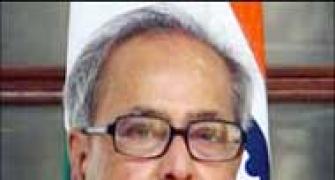 In the next financial year, the salaried will not only have more money to spend but also can look forward to easy tax filings. One of the income tax reforms that the finance minister announced on Friday was the introduction of Saral II form, which will only have two pages.
In the next financial year, the salaried will not only have more money to spend but also can look forward to easy tax filings. One of the income tax reforms that the finance minister announced on Friday was the introduction of Saral II form, which will only have two pages.
To ease tax filing pains, the finance ministry is phasing out the current form, 2F, in which the taxpayer needs to fill up certain calculations.
"I mentioned last year that the income tax return forms should be simple and user-friendly. The Income Tax Department is now ready to notify Saral-II form for individual salaried taxpayers for the coming assessment year. This form will enable individuals to enter relevant details in a simple format in only two pages," Finance Minister Pranab Mukherjee said during his Budget speech.
"The forms are yet to be notified. We hope that they are self-contained," said Amitabh Singh, Tax Partner, Ernst & Young. For a long time, the Income Tax Department had the Saral form that it discontinued around four years ago. This form was a one pager but the taxpayer had to attach different sheets showing computation of income under various income heads. "So, it went up to four-five pages," said Singh. The replacement forms brought in all computation within the form but got tedious for the taxpayer.
Tax experts reckon that the self-employed people will continue to use the same form as the tax computation for professionals and businesspersons is more complicated.
"These forms will be applicable to the salaried, who have income only from their employment and property. In case, there is an instance of income from any other source, they will need to fill in different forms," said a tax expert.
Taxpayers can also look forward to less interaction with the tax authorities, thanks to the computerisation and modernisation of the Income Tax Department.
"We have continued on the path of computerisation in core areas of service delivery in the administration of direct taxes. This will reduce the physical interface between taxpayers and tax administration and speed up proced-ures and processes," said Mukherjee.
One such initiative, namely the Centralised Processing Centre at Bengaluru is fully functional and is currently processing around 20,000 returns a day. "This initiative will be taken forward by setting up two more centres during the year," said Mukherjee.
Tax experts say that such systems will make the audits more computerised and free from the control of any individual assessing officer.
This is also an effort to reduce corruption in the tax department. "Not just in India but globally governments believe that corruption reduces when the physical interface between the authorities and taxpayer lessens," said Singh.
The government has also introduced a pilot project, called 'Sevottam', to provide single window system for registration of all applications including those for redressal of grievances, as well as paper returns. Currently, the scheme is on in Pune, Kochi and Chandigarh. Four more centres will be added to this list in the next financial year.
Tax experts say that the ministry is undertaking these reforms to increase the tax base of the country and increase the tax to GDP ratio. "These moves will yield results in the coming four-five years. They will enable the Income Tax Department to trace more transactions and easily catch the dishonest ones," said Vikas Vasal, executive director, KPMG.










